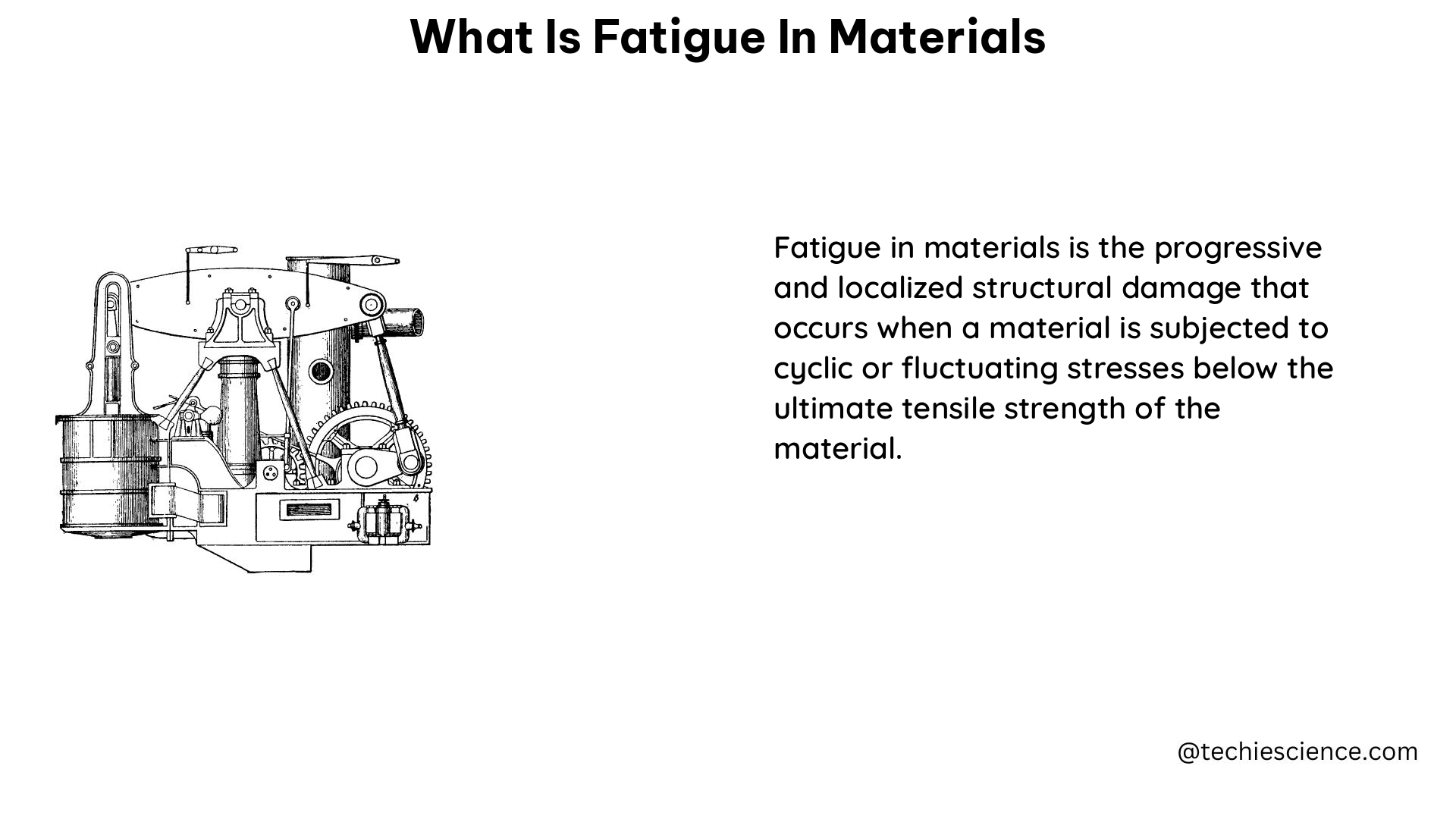Fatigue in materials is a complex phenomenon characterized by the progressive and localized structural damage of a material due to repeated or cyclic loading. This damage occurs below the material’s yield strength and can lead to the initiation and propagation of cracks, ultimately resulting in failure. The process of fatigue involves dislocation movements at the microscopic level, which form persistent slip bands that become the nucleus of short cracks. Macroscopic and microscopic discontinuities, as well as component design features that cause stress concentrations, are common locations where the fatigue process begins.
Understanding Fatigue Life and S-N Curves
The fatigue life of a material, defined as the number of stress cycles of a specified character that a specimen sustains before failure of a specified nature occurs, can be characterized by an S-N curve, also known as a Wöhler curve. This curve plots the cyclic stress (S) against the cycles to failure (N) on a logarithmic scale. The S-N curve is derived from tests on samples of the material to be characterized, and different materials will have different S-N curves, reflecting their varying resistance to fatigue.
For example, a typical S-N curve for a high-strength steel alloy may show a fatigue limit of around 500 MPa, where the material can withstand an infinite number of cycles without failure. In contrast, a softer aluminum alloy may not exhibit a clear fatigue limit, and its S-N curve may show a continuous decrease in cyclic stress with increasing number of cycles to failure.
Factors Influencing Fatigue Life

Several factors can influence the fatigue life of a material, including:
- Temperature: Elevated temperatures can accelerate the fatigue process by increasing the mobility of dislocations and promoting crack propagation.
- Surface Finish: A smooth surface finish can improve fatigue life by reducing stress concentrations, while a rough surface can act as a crack initiator.
- Metallurgical Microstructure: The grain size, phase composition, and defects in the material’s microstructure can significantly affect its resistance to fatigue.
- Presence of Oxidizing or Inert Chemicals: The chemical environment can influence the formation and propagation of fatigue cracks.
- Residual Stresses: Compressive residual stresses can improve fatigue life by inhibiting crack initiation, while tensile residual stresses can accelerate it.
- Scuffing Contact (Fretting): Fretting can cause localized damage and stress concentrations, leading to premature fatigue failure.
- Frequency and Amplitude of Applied Load: Higher frequencies and amplitudes of cyclic loading generally result in shorter fatigue life.
Quantifying Fatigue Life
Engineers use various methods to quantify fatigue life, including:
- Stress-Life Method: Also known as the S-N method, this approach relates the applied cyclic stress to the number of cycles to failure.
- Strain-Life Method: This method considers the local strain at the critical location and is more suitable for components that experience plastic deformation.
- Crack Growth Method: This approach focuses on the initiation and propagation of fatigue cracks, using fracture mechanics principles.
- Probabilistic Methods: These methods incorporate statistical analysis to account for the inherent variability in fatigue life.
These methods often involve reducing complex or variable amplitude loading to a series of fatigue-equivalent simple cyclic loadings using techniques such as the rainflow-counting algorithm.
Fatigue Design Considerations
When designing components to withstand fatigue, it is essential to consider the direction of applied stress with respect to the weld and the weld geometry. Weld details with similar fatigue strength are grouped together, and a combination of statistical analysis and engineering judgment is used to define fatigue classes, which provide designers with information about a specific weld’s resistance to fatigue stresses.
For example, a transverse butt weld in a steel structure may have a lower fatigue class than a longitudinal fillet weld, as the former is more susceptible to stress concentrations and crack initiation. Designers must carefully select the appropriate weld details and consider the loading conditions to ensure the long-term reliability and safety of the component.
Conclusion
Fatigue in materials is a complex phenomenon influenced by various factors, including material properties, loading conditions, and environmental factors. By understanding the mechanisms of fatigue and using appropriate methods to quantify fatigue life, engineers can design components that withstand the stresses and strains of cyclic loading and ensure the long-term stability and safety of structures and systems.
References:
- Fatigue of Materials – an overview | ScienceDirect Topics. Available at: https://www.sciencedirect.com/topics/materials-science/fatigue-of-materials
- Fatigue (Materials) – an overview | ScienceDirect Topics. Available at: https://www.sciencedirect.com/topics/earth-and-planetary-sciences/fatigue-materials
- Fatigue (material) – Wikipedia. Available at: https://en.wikipedia.org/wiki/Fatigue_(material)
- Statistical analysis of fatigue test data – TWI Global. Available at: https://www.twi-global.com/technical-knowledge/published-papers/statistical-analysis-of-fatigue-test-data
- Fatigue Life Prediction of Welded Structures Using a Fracture Mechanics Approach – ASME Digital Collection. Available at: https://asmedigitalcollection.asme.org/PVP/proceedings-abstract/PVP2015/56912/V003T03A032/276524
- Fatigue Design Handbook – SAE International. Available at: https://www.sae.org/publications/books/content/ae-10
- Fatigue Life Prediction of Welded Joints Using the Nominal Stress Approach – ASME Digital Collection. Available at: https://asmedigitalcollection.asme.org/PVP/proceedings-abstract/PVP2016/50153/V003T03A032/283524

The lambdageeks.com Core SME Team is a group of experienced subject matter experts from diverse scientific and technical fields including Physics, Chemistry, Technology,Electronics & Electrical Engineering, Automotive, Mechanical Engineering. Our team collaborates to create high-quality, well-researched articles on a wide range of science and technology topics for the lambdageeks.com website.
All Our Senior SME are having more than 7 Years of experience in the respective fields . They are either Working Industry Professionals or assocaited With different Universities. Refer Our Authors Page to get to know About our Core SMEs.